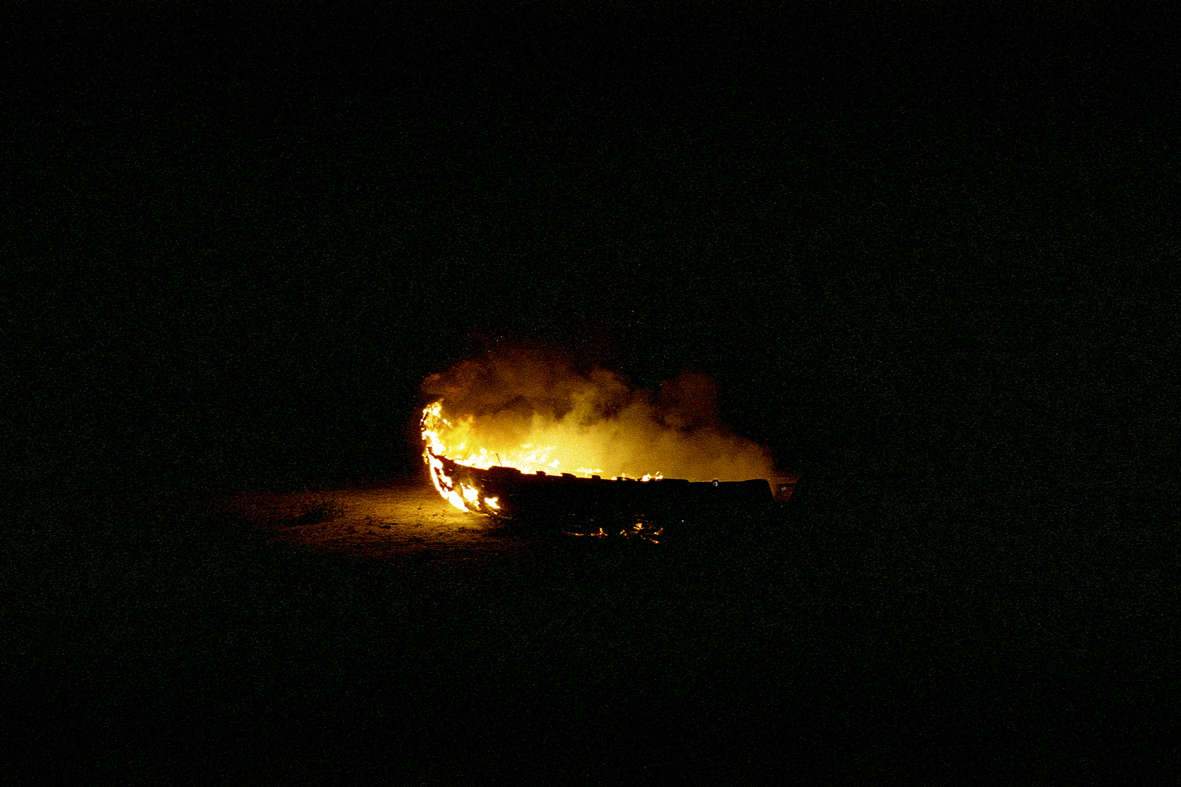MAN in Nuoro is hosting, from March 28 to June 16, 2024, the exhibition In girum imus nocte by Giorgio Andreotta Calò (Venice, 1979), who conducted work in Sardinia between 2013 and 2018 focusing on collective memory, landscape and the social and ecological consequences of extractive processes. This research gave rise to a body of fundamental works in the artist’s career, part of which now find an ideal location at the MAN museum thanks to the Ministry of Culture’s Contemporary Art Plan, complementing the previous acquisition of the work Produttivo.
In 2019, Giorgio Andreotta Calò donated to MAN a part of the environmental installation “Produttivo,” composed of cores extracted during the mining campaigns of Carbosulcis.spa, a company active in the exploitation of the Sulcis coalfield until 2018, located in the southwest of the island. Through a process similar to geognostic surveys, the artist analyzes the stratification and identity of the place, highlighting socio-cultural aspects.
The works of the project In girum imus nocte share a similar semantic root, testifying to a process of research and interaction with the Sardinian territory and its history. The title, taken from the Latin palindrome “in girum imus nocte et consumimur igni” (“we go around at night and are consumed by fire”), is meant to evoke the symbolic charge of the film installation of the same name. Together with the sculptures Pinna Nobilis and Dogod, this work seeks to create a coherent whole in which each element enhances each other’s meanings.
The centerpiece of the installation is the film documenting the march made by the artist together with a group of miners and fishermen from Sulcison the night of December 4, 2014, the day of St. Barbara, patron saint of the mining community. This walk takes on a ritual and eschatological dimension, recognizing the social role of the workers and emphasizing the value of their presence. The march, from the mine to the island of Sant’Antioco, made from dusk to dawn, is emphasized by the stick that accompanies the journey, which later became an integral part of the work on display in the exhibition. The use of 16 mm film, with its fragility, contributes to the overall sense of the narrative, evoking the alchemical component of transformation of matter present in all the works on display.
The metamorphosis of a creature’s skull, somewhere between dog (Dog) and deity (God), is the core of Dogod. Its constituent elements, from the Cirdu pond in Sant’Antioco, were assembled and then cast in white bronze through the lost wax technique, creating the work exhibited here. The sculpture Pinna Nobilis also harks back to Sulcis: it was produced from the cast of a specimen of the Mediterranean endemic bivalve species of the same name, also recovered at Punta Trettu during the making of the film. The works on display, among the most emblematic and representative of Giorgio Andreotta Calò’s research, accompany the visitor on a profound exploration: into the depths of the earth, but also into the essence of the artist’s artistic method. In this way, landscape and history merge with the works, becoming essential components of them.
The project is supported by the PAC 2022-2023 - Plan for Contemporary Art, promoted by the General Directorate for Contemporary Creativity of the Ministry of Culture.
Born in Venice in 1979, Giorgio Andreotta Calò currently lives and works in his hometown. He received a degree in sculpture from the Academy of Fine Arts in Venice and continued his studies at the Kunsthochschule in Berlin. Between 2008 and 2010 he was artist-in-residence at the Rijksakademie van Beeldende Kunsten in Amsterdam. His work was presented at the 54th Venice Biennale, directed by Bice Curiger, in 2011. In 2012 he received the Premio Italia for contemporary art, sponsored by the MAXXI Museum. In 2014 he was awarded the New York Prize, sponsored by the Italian Ministry of Foreign Affairs. In 2017, he was selected as one of three artists to represent Italy in the Pavilion curated by Cecilia Alemani at the 57th International Art Exhibition of the Venice Biennale. In 2018, with the project “Anastasis,” he won the Italian Council call, promoted by the Ministry of Culture, to create a monumental installation at the Oude Kerk in Amsterdam. In 2019, a solo exhibition was dedicated to him at the Pirelli Hangar Bicocca. His works are part of numerous public and private collections in Italy and abroad.
Image: Giorgio Andreotta Calò, In girum imus nocte (2014). Photo: Iris Rochet-Lanchet
 |
| At MAN in Nuoro, Giorgio Andreotta Calò's project on the collective memory of Sardinia |
Warning: the translation into English of the original Italian article was created using automatic tools. We undertake to review all articles, but we do not guarantee the total absence of inaccuracies in the translation due to the program. You can find the original by clicking on the ITA button. If you find any mistake,please contact us.